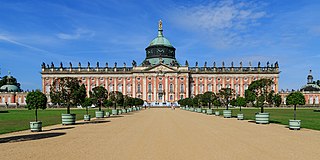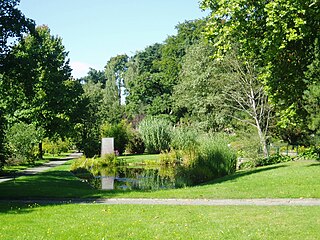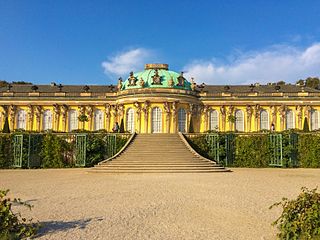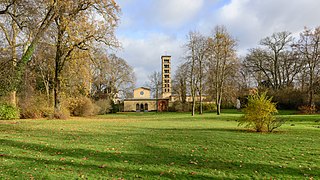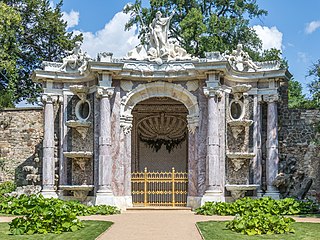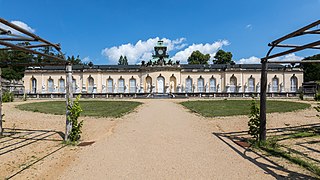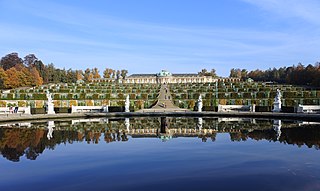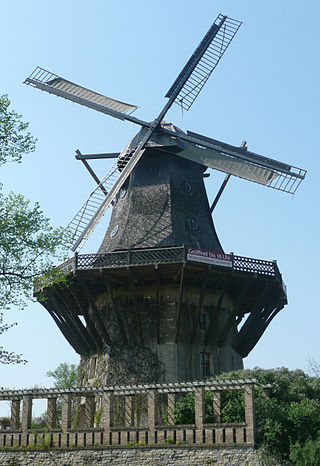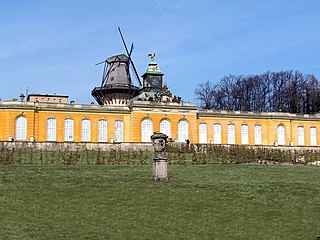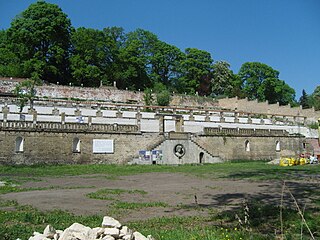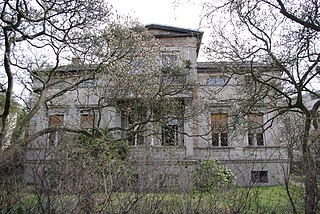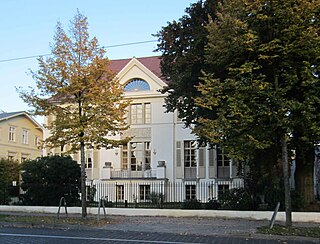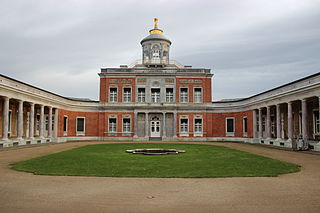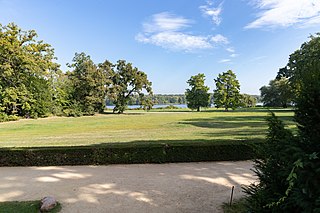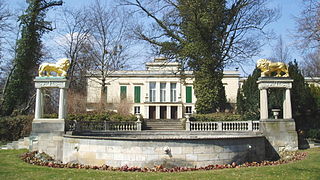Self-guided Sightseeing Tour #11 in Potsdam, Germany
Legend
Guided Free Walking Tours
Book free guided walking tours in Potsdam.
Guided Sightseeing Tours
Book guided sightseeing tours and activities in Potsdam.
Tour Facts
12.9 km
177 m
Experience Potsdam in Germany in a whole new way with our self-guided sightseeing tour. This site not only offers you practical information and insider tips, but also a rich variety of activities and sights you shouldn't miss. Whether you love art and culture, want to explore historical sites or simply want to experience the vibrant atmosphere of a lively city - you'll find everything you need for your personal adventure here.
Activities in PotsdamIndividual Sights in PotsdamSight 1: New Palace
The New Palace is a palace situated on the western side of the Sanssouci park in Potsdam, Germany. The building was begun in 1763, after the end of the Seven Years' War, under King Friedrich II and was completed in 1769. It is considered to be the last great Prussian Baroque palace.
Wikipedia: New Palace, Potsdam (EN), Website, Heritage Website
Sight 2: Biologischer Garten
The Botanical Garden in Potsdam, is a botanical garden and arboretum maintained by the University of Potsdam. It has a total area of 8.5 hectares, of which 5 hectares are open to the public, and is located immediately southwest of the Orangery Palace at Maulbeerallee 2, Potsdam, in the German state of Brandenburg. It is open daily; an admission fee is charged for the glasshouses only (2017).
Sight 3: Sanssouci Park
Book Ticket*Sanssouci is a historical building in Potsdam, near Berlin. Built by Prussian King Frederick the Great as his summer palace, it is often counted among the German rivals of Versailles. While Sanssouci is in the more intimate Rococo style and is far smaller than its French Baroque counterpart, it, too, is notable for the numerous temples and follies in the surrounding park. The palace was designed and built by Georg Wenzeslaus von Knobelsdorff between 1745 and 1747 to meet Frederick's need for a private residence where he could escape the pomp and ceremony of the royal court. The palace's name is a French phrase meaning "without worries" or "carefree", emphasising that the palace was meant as a place of relaxation rather than a seat of power.
Sight 4: Chinese House

The Chinese House is a garden pavilion in Sanssouci Park in Potsdam, Germany. Frederick the Great had it built, about seven hundred metres southwest of the Sanssouci Summer Palace, to adorn his flower and vegetable garden. The garden architect was Johann Gottfried Büring, who between 1755 and 1764 designed the pavilion in the then-popular style of Chinoiserie, a mixture of ornamental rococo elements and parts of Chinese architecture.
Sight 5: Marly Garden
Book Ticket*The Marly Garden is a garden area in Potsdam's Sanssouci Park.
Sight 6: Neptungrotte
The Neptune Grotto close to the Obelisk entrance in Sanssouci Park, Potsdam, was created by Frederick the Great between 1751 and 1757 to beautify the park.
Sight 7: Picture Gallery
The Picture Gallery in the Sanssouci Park of Potsdam was built in 1755–64 during the reign of Frederick II of Prussia under the supervision of Johann Gottfried Büring. The Picture Gallery is situated east of the palace and is the oldest extant museum built for a ruler in Germany.
Wikipedia: Sanssouci Picture Gallery (EN), Website, Heritage Website
Sight 8: Sanssouci Palace
Sanssouci Palace is an architectural monument in the former residential city of Potsdam. It was built between 1745 and 1747 on behalf of Frederick the Great according to plans by Georg Wenzeslaus von Knobelsdorff in the style of the Friderician Rococo. Because of its art-historical significance, Sanssouci Palace is also known as the Prussian Versailles.
Sight 9: Historische Mühle
The Historic Mill of Sanssouci is a mill in Potsdam, Germany. Thanks to the legend of The Miller of Sanssouci, the Mill became famous, particularly due to its association with Frederick the Great and his summer palace of Sanssouci.
Wikipedia: Historic Mill of Sanssouci (EN), Heritage Website, Youtube
Sight 10: Neue Kammern von Sanssouci
The New Chambers is part of the ensemble of Sanssouci palace in Sanssouci Park, Potsdam, Germany. They were constructed for King Frederick the Great of Prussia from 1771 to 1775.
Wikipedia: New Chambers (Sanssouci) (EN), Website, Heritage Website
Sight 11: Winzerberg
The Winzerberg is located in Potsdam and is located east opposite Sanssouci Park. The entrance from the southern foot of the hill is formed by the imposing Triumphal Gate. The Winzerberg is part of the administrative inventory of the Prussian Palaces and Gardens Foundation Berlin-Brandenburg, is maintained by a support association that has already completely restored it and has been part of Potsdam's World Heritage Site since 1990.
Sight 12: Villa Hasselkampf
The Villa Hasselkampf is a listed building in the Nauener Vorstadt district of Potsdam, Puschkinallee 1.
Sight 13: Augentagesklinik am Kapellenberg
The Villa Pietschker, also known as Villa von Winterfeld, is a listed building in the Nauener Vorstadt district of Potsdam, Puschkinallee 12.
Sight 14: Marmor Palace
The Marmorpalais is a former royal residence in Potsdam, near Berlin in Germany, built on the grounds of the extensive Neuer Garten on the shores of the Heiliger See. The palace was commissioned by King Frederick William II of Prussia and designed in the early Neoclassical style by the architects Carl von Gontard and Carl Gotthard Langhans. Despite the name, brick is the main material. The palace remained in use by the Hohenzollern family until the early 20th century. It served as a military museum under communist rule, but has since been restored and is once again open to the public.
Sight 15: Neuer Garten
Like Babelsberg Park and Sanssouci Park, the New Garden is part of the ensemble of Potsdam's Palace Parks. The area is a 102.5-hectare park area bordering the Heiliger See and the Jungfernsee in the north of Potsdam. From 1787, Friedrich Wilhelm II had a new garden laid out on this site, which was to stand out from the baroque Sanssouci Park.
Wikipedia: Neuer Garten Potsdam (DE), Website, Heritage Website
Sight 16: Villa Wunderkind
The Villa Metz is an estate in Potsdam's Berlin Vorstadt district with the address Seestraße 35–37. The property is located directly on the Holy See.
Sight 17: Residenz des Botschafters von Ecuador
The Landhaus Prölls is located in the Potsdam district of Berliner Vorstadt at Seestraße 41/42, was built in 1926 and is located on the eastern shore of the Holy Lake. The building is a listed building with the remains of the enclosure and has served as the residence of the ambassador of Ecuador since 2001.
Sight 18: Villa Schöningen
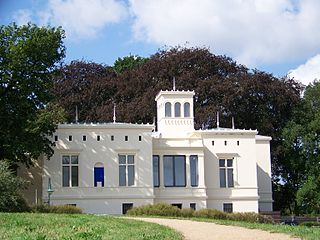
Villa Schöningen is a historic residence in the city of Potsdam, Germany, located at Berliner Straße 86 at the corner with Swan Avenue just west of the Glienicke Bridge, which leads to Berlin.
Sight 19: Villa Kampffmeyer
The Villa Kampffmeyer in Potsdam is a prestigious listed building in the immediate vicinity of the Glienicke Bridge.
Sight 20: Schloss Glienicke
Glienicke Palace is a historic palace located on the peninsula of Berlin-Wannsee in Germany. It was designed by Karl Friedrich Schinkel around 1825 for Prince Carl of Prussia. Since 1990, Glienicke Palace and the park have been part of the UNESCO World Heritage Site "Palaces and Parks of Potsdam and Berlin" because of their unique contribution to Prussian landscape architecture.
Share
Disclaimer Please be aware of your surroundings and do not enter private property. We are not liable for any damages that occur during the tours.
GPX-Download For navigation apps and GPS devices you can download the tour as a GPX file.
